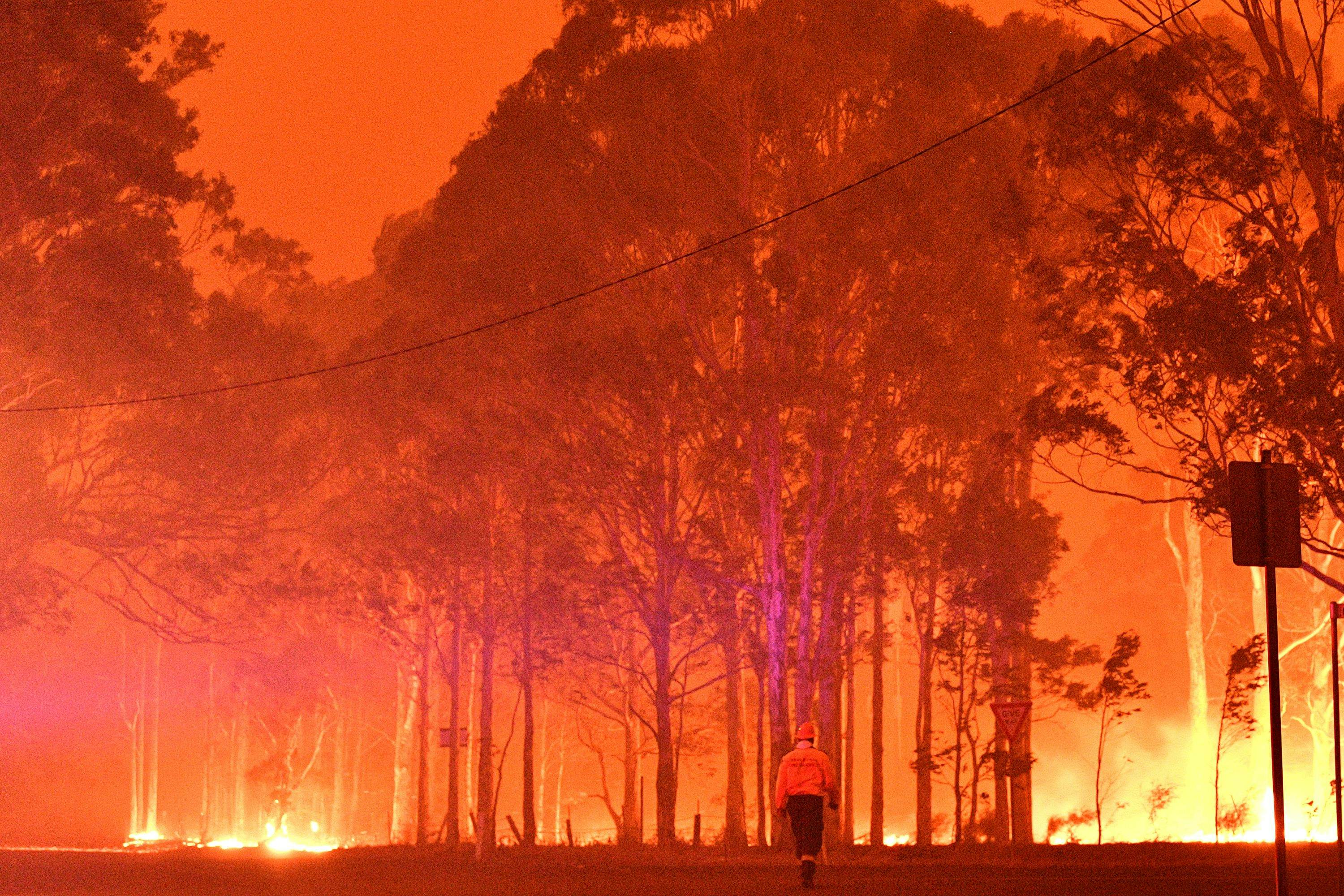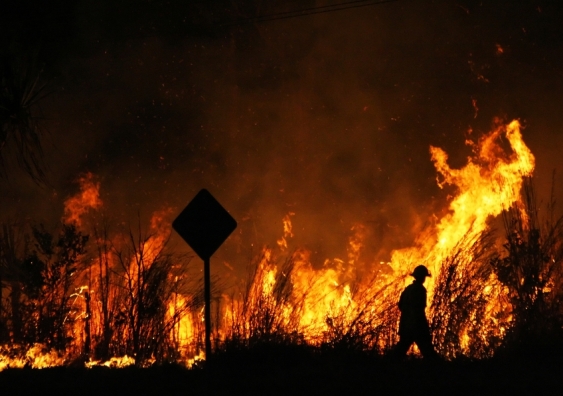Introducing the Risks: Why Every Property Owner Needs a Bushfire Risk Assessment
Introducing the Risks: Why Every Property Owner Needs a Bushfire Risk Assessment
Blog Article
Finest Practices in Bushfire Monitoring for Comprehensive Fire Security
In the world of bushfire management, the mission for comprehensive fire protection requires a meticulous technique that incorporates various important elements. From rigorous danger evaluation and strategic planning to the implementation of efficient plant life administration methods, the spectrum of best methods is complex and large. Area engagement and education play essential duties in fostering resilience and preparedness, while early discovery and warning systems act as critical safeguards. Furthermore, the seamless sychronisation of emergency situation reaction and evacuation plans is crucial for making certain the safety and security and well-being of individuals in the face of intensifying bushfire risks. As we navigate via the nuances of these ideal methods, an expedition into the complex internet of strategies and techniques awaits, promising a much deeper understanding of the diverse landscape of bushfire administration for comprehensive fire defense.
Threat Analysis and Planning
In bushfire monitoring for fire defense, the initial step includes performing an extensive threat assessment and establishing a thorough strategy to reduce prospective threats. By recognizing these threats, fire security authorities can focus on locations that are most prone to bushfires and allot sources properly.
Adhering to the risk analysis, the following crucial action is to create a comprehensive strategy to attend to the determined risks. This strategy should outline methods for prevention, readiness, response, and healing in case of a bushfire. It should additionally include measures for neighborhood emptying, communication, and involvement treatments. By having a well-defined strategy in position, emergency solutions can act promptly and effectively to protect lives, property, and the setting during a bushfire outbreak. Reliable danger assessment and preparation are essential parts of bushfire administration for guaranteeing thorough fire defense.
Plant Life Management Methods
After performing an extensive danger evaluation and establishing a detailed strategy for bushfire monitoring, the focus moves to carrying out efficient plants administration techniques. Greenery management plays an important role in decreasing the intensity and spread of bushfires.
In addition to developing defensible room, suggested burning is one more crucial plants administration method. Recommended burns involve purposely establishing fires under controlled conditions to reduce the accumulation of gas, reduce the possibility of high-intensity wildfires, and advertise ecological community health and wellness. By tactically burning locations with excess greenery, fuel degrees are minimized, making it harder for fires to spread out rapidly and uncontrollably.

Area Involvement and Education And Learning
Reliable area involvement and education are vital elements in building a aggressive and resistant technique to bushfire administration. By including community members in the planning and implementation of bushfire management approaches, stakeholders come to be energetic participants in safeguarding their areas and homes. Neighborhood engagement promotes a sense of shared duty and equips locals to take possession of their safety and security.
Education plays a vital function in equipping people with the understanding and abilities needed to mitigate bushfire threats successfully. Offering educational sources on fire avoidance, discharge procedures, and the importance of early discovery can substantially improve community readiness. Furthermore, educating citizens on the regional bushfire environment, consisting of fire habits and threat variables, enables them to make enlightened decisions during risky situations.
With continuous involvement and education efforts, areas can develop a collective understanding of bushfire hazards and work collaboratively to reduce the influence of wildfires. By fostering a culture of readiness and durability, area members can enhance their capability to react effectively to bushfire emergencies and shield both lives and building.

Very Early Detection and Caution Solutions
Community involvement and education work as fundamental pillars in developing proactive bushfire monitoring methods, laying the groundwork for the execution of robust very early discovery and warning systems. Early discovery and warning systems are crucial elements in reducing the influence of bushfires on communities and the setting. These systems include a series of innovations and strategies intended at recognizing and notifying authorities and homeowners to prospective fire episodes swiftly and effectively.
One crucial element of very early detection systems is the usage of advanced tracking modern technologies such as satellite imagery, drones, and weather condition terminals to discover indicators of potential fire ignition. These innovations give real-time data that can be evaluated to recognize fire-prone locations and trigger early cautions. In addition, the integration of community-based monitoring networks and automated sharp systems can boost the effectiveness of early detection initiatives by entailing residents in reporting prospective fire dangers and receiving timely warnings.
Efficient early discovery and warning systems count on a multi-faceted strategy that combines technological development, neighborhood participation, and quick emergency situation action methods to ensure the prompt and coordinated management of bushfire incidents. By buying these systems and fostering collaboration between stakeholders, communities can enhance their resilience to bushfires and minimize the affiliated threats.
Emergency Situation Reaction and Discharge Strategies
A Recommended Site extensive and well-coordinated emergency reaction and emptying strategy is crucial for properly securing lives and residential property during bushfire incidents. These strategies ought to be meticulously crafted, taking right into account elements such as the topography of the area, the thickness of vegetation, and the prospective speed and instructions of the fire's spread.
One vital aspect of an emergency situation reaction strategy is the facility of clear communication channels to disseminate precise and timely info to residents and emergency -responders. This can include link using alarms, mobile notifies, social media sites, and neighborhood conferences to guarantee that every person is notified and recognizes what actions to take.
Emptying courses need to be pre-identified and on a regular basis preserved to guarantee they are accessible throughout emergency situations. Additionally, assigned discharge centers should be developed to give shelter, medical aid, and support services to evacuees.
Normal drills and exercises are important to acquaint residents with emptying treatments and examine the effectiveness of the plan. By constantly updating and examining emergency situation reaction and emptying strategies, areas can enhance their readiness and durability despite bushfire hazards.
Conclusion
In final thought, efficient bushfire monitoring calls for a comprehensive method that consists of danger analysis, greenery administration, area engagement, very early detection systems, and emergency situation response strategies. By executing these finest methods, neighborhoods can much better shield themselves from the terrible impacts of bushfires - BMP. It is vital to focus on aggressive actions to alleviate the threats description presented by bushfires and make sure the security and wellness of individuals and communities at threat
After performing an extensive risk assessment and creating a thorough strategy for bushfire administration, the focus changes to applying efficient greenery management strategies.Reliable area interaction and education are important components in constructing a proactive and resistant technique to bushfire administration. By involving area members in the preparation and application of bushfire management approaches, stakeholders come to be active participants in protecting their homes and areas.Community involvement and education offer as foundational columns in establishing aggressive bushfire monitoring practices, laying the foundation for the application of durable early discovery and caution systems.In final thought, reliable bushfire administration requires a thorough method that consists of danger analysis, plants monitoring, neighborhood involvement, early discovery systems, and emergency situation reaction strategies.
Report this page